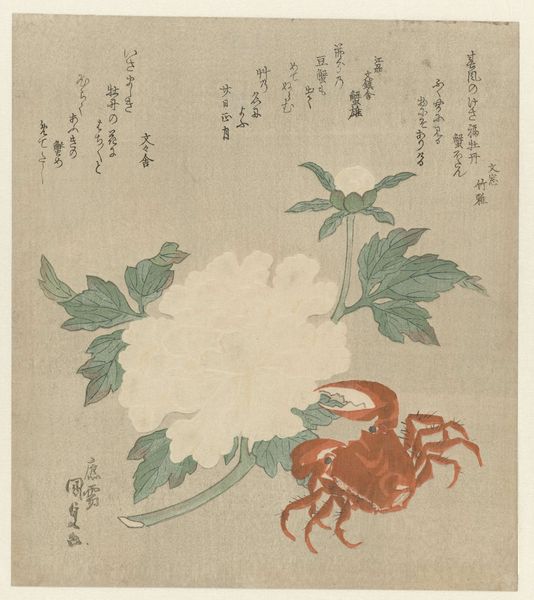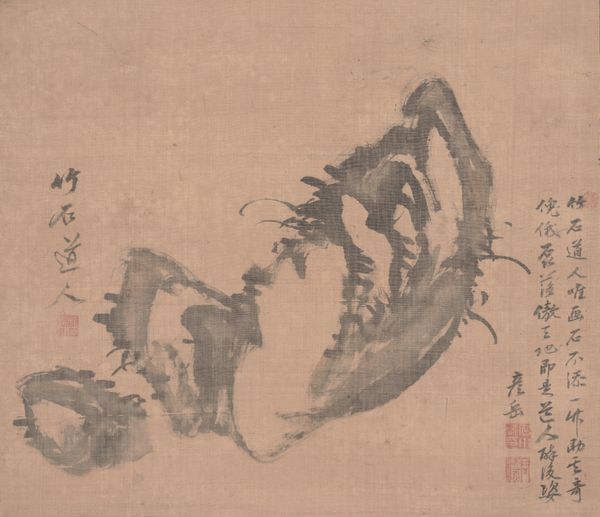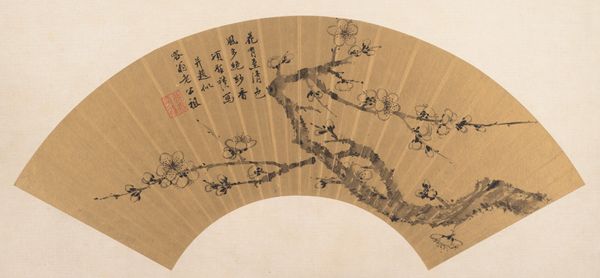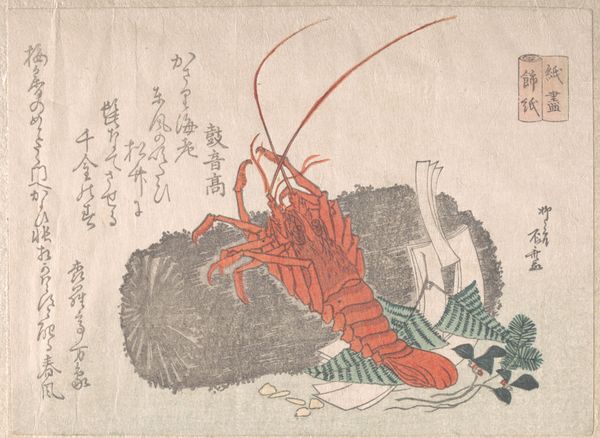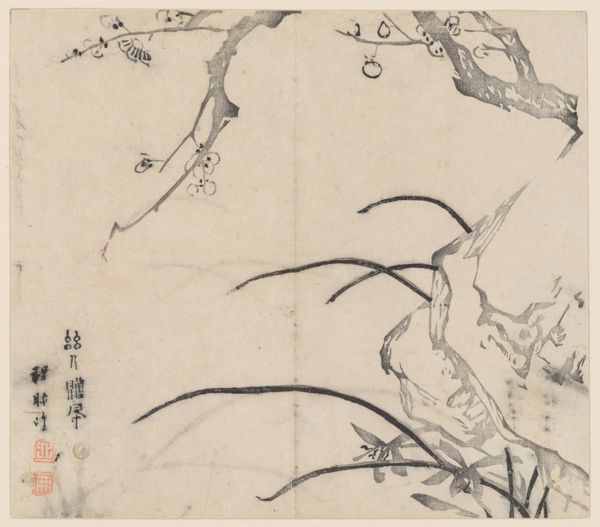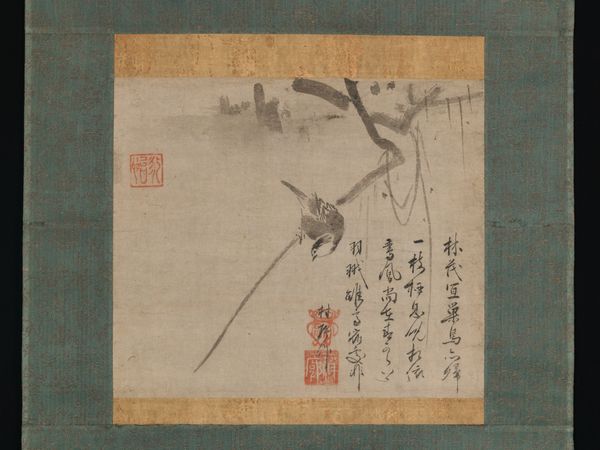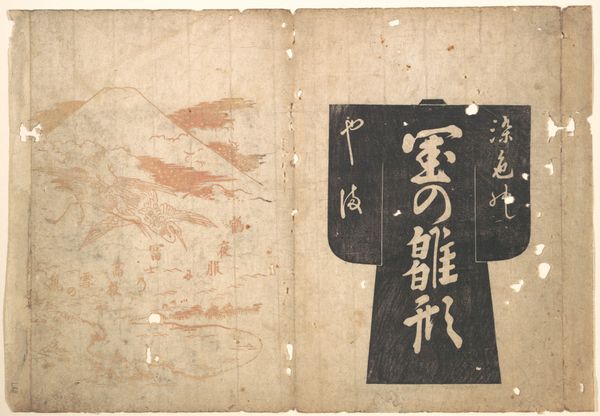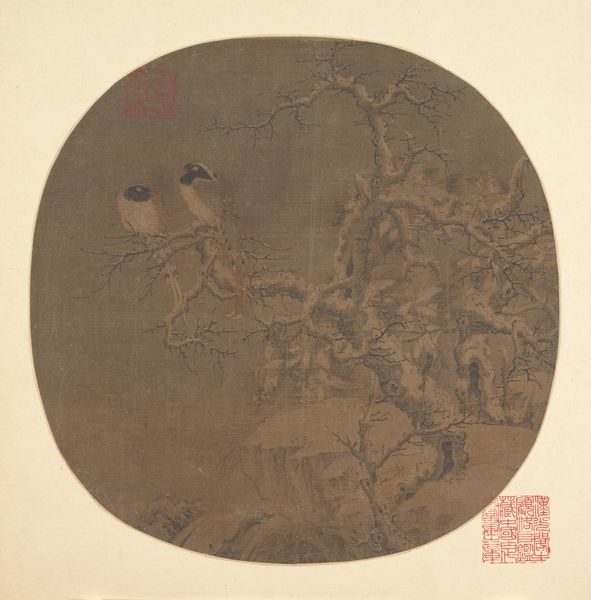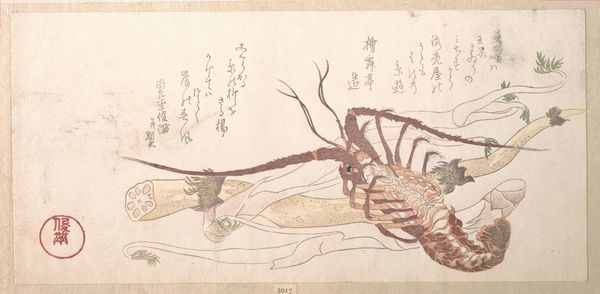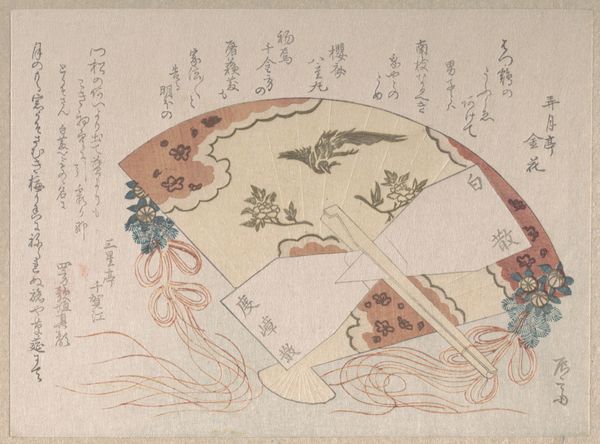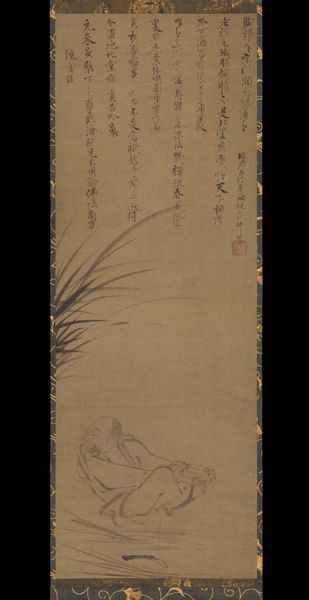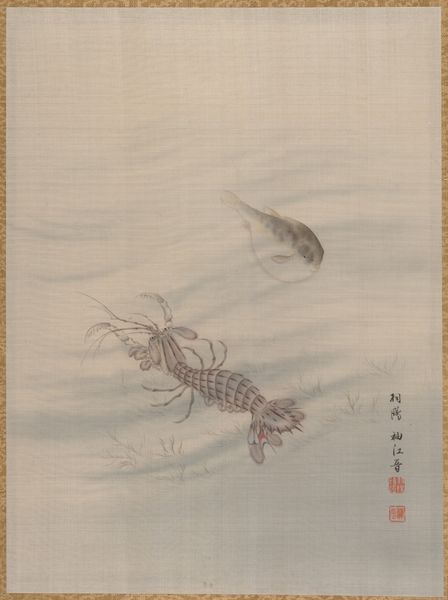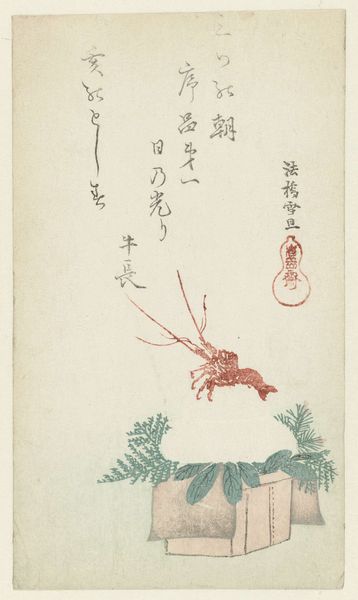
#
aged paper
#
toned paper
#
water colours
#
asian-art
#
flower
#
japan
#
tea stained
#
personal sketchbook
#
coloured pencil
#
ink colored
#
23_muromachi-period-1392-1573
#
watercolour bleed
#
watercolour illustration
#
watercolor
Dimensions: Image: 10 3/4 × 16 3/4 in. (27.3 × 42.5 cm) Overall with mounting: 43 1/8 × 20 1/8 in. (109.5 × 51.1 cm) Overall with knobs: W. 22 in. (55.9 cm)
Copyright: Public Domain
Curator: Standing before us is "Plum Blossoms," created by Bokusai sometime between 1400 and 1491, during the Muromachi period. It's crafted using ink and watercolor on toned paper. Editor: It’s immediately striking, isn't it? The delicacy of the branches against what looks like a muted, full moon creates a melancholic, almost wistful mood. There's such potent emptiness around the rendered area, it gives the sparse tree presence beyond its dimensions. Curator: Yes, the artist’s sophisticated handling of the negative space emphasizes the composition’s core elements and offers a deep understanding of *ma*, a central concept in Japanese art. Notice also the carefully modulated washes of ink and subtle colors which exemplify skillful restraint. Editor: And that restraint resonates, especially when you think about the cultural symbolism of plum blossoms in Japan. They represent perseverance, hope, and the coming of spring – qualities especially cherished after periods of hardship, whether it’s enduring seasonal change or the upheavals of a complicated political era like the Muromachi. How did artistic patronage during that period play into this work, in your opinion? Curator: Given the Muromachi period's transition toward shogunate influence, one might assume this imagery also alludes to those shifting sociopolitical and philosophical orientations, particularly concerning Zen Buddhism’s increasing sway and the role of nature in artistic and scholarly practice. I suggest that an underlying conceptual grid also harmonizes elements for our viewing experience. Editor: I can't help but also think about issues of gender within this context, considering women’s constrained participation within formal art circles. While the artist may not have explicitly addressed these matters, viewing this kind of intimate artwork as a type of visual self-representation prompts broader inquiries, don't you think? The emphasis on fragility might subtly be addressing cultural positions too. Curator: Well, yes and no. Your line of reasoning moves us a bit far away from considering it, above all, a carefully organized study of forms rendered skillfully through precise artistic techniques. Nonetheless, appreciating art involves considering broader frameworks, too. Editor: Absolutely. Analyzing this gorgeous work really underscores how visual art, when approached through diverse interpretive methods, reveals so many valuable understandings about a singular artwork.
Comments
No comments
Be the first to comment and join the conversation on the ultimate creative platform.
